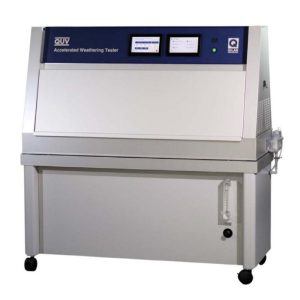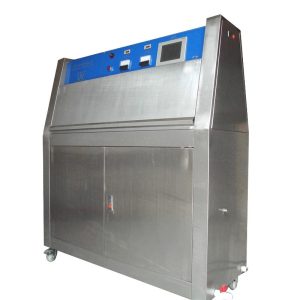세라믹 및 관련 표준에 UV 노화 테스트 상자 적용
Ceramics usually do not need to undergo UV aging tests because the ceramic material itself has good weather resistance and durability. Compared with other materials (플라스틱과 같은, 코팅, 등.), ceramics are less sensitive to UV radiation and are not easily affected by UV radiation. Ceramics generally have high chemical and thermal stability and are able to maintain their properties and appearance for a long time under a variety of environmental conditions.
하지만, in special application cases, such as ceramic coatings or special ceramic materials (such as glazes, 등.), UV aging tests may be required to evaluate their weather resistance and performance stability. 이 경우, UV aging tests can simulate the exposure of ceramic materials in outdoor environments to evaluate their UV resistance, 화학적 내성, abrasion resistance and other properties.

세라믹 및 관련 표준에 UV 노화 테스트 상자 적용
업계 표준
The standards of ceramics usually cover the physical properties of materials, 화학적 특성, mechanical properties, dimensional requirements, and requirements for specific application areas. The following are some common industry standards and specifications that apply to different types of ceramic materials:
ASTM C242: Standard specification for Ceramic Tiles
ASTM C373: Standard Test Method for Water Resistance of Ceramics and Glass
ISO 10545 시리즈: International standards for the physical and mechanical properties of ceramic tiles and ceramic plates
ISO 13006: International standard for product definitions, dimensions and tolerances for ceramic tiles and stone tiles
ISO 27447: International standard for wear resistance of ceramic tiles
GB/T 3810.6: Chinese national standard for physical and mechanical properties of ceramic tiles
GB/T 6566: Chinese national standard for determination of radioactive elements in ceramic products
These standards are usually developed and published by international standards organizations (ASTM과 같은, ISO) or standardization bodies in various countries (such as the National Standards Committee of China). The specific standards should be selected according to the type and application field of ceramic materials.

세라믹 및 관련 표준에 UV 노화 테스트 상자 적용
Application Cases
The following are some specific application cases of ceramics:
Construction field: Ceramic tiles and ceramic plates are widely used for decoration and covering of floors, walls, bathrooms, kitchens, 등., both indoor and outdoor. Ceramic tiles are wear-resistant, water-resistant, and easy to clean, making them suitable for high traffic volume areas and humid environments.
Medical instruments: Ceramics are used in manufacturing medical instruments and devices such as dental restorative materials, artificial bones and joints, dental implants, and others. Ceramics have the advantages of biocompatibility, 내식성, and mechanical strength in the medical field.
Electronics: Ceramic materials are used in the manufacturing of electronic components and devices, such as ceramic capacitors, ceramic media, ceramic insulators, 등. Ceramics have good insulation properties, high temperature resistance and chemical stability in the field of electronics.
환경 보호: Ceramics can be used for environmental treatment and pollution control, such as ceramic filter media and ceramic membrane for water treatment, gas purification and solid waste treatment.
Art and decoration: As an art and decorative material, ceramics are used to make pottery, ceramic sculptures, ceramic utensils, tile murals, 등.
Ceramic coatings: Ceramic coatings are applied to metals, 플라스틱, or other substrates to provide properties such as resistance to wear, 부식, heat conduction, or insulation. For instance, ceramic coatings are used in areas such as automotive engine parts, cutting tools, stoves, 등.
These application cases are only a small part of the application fields of ceramics, and the practical application can be more customized and expanded according to different industries and needs. As a multifunctional material, ceramic has a wide application prospect.
